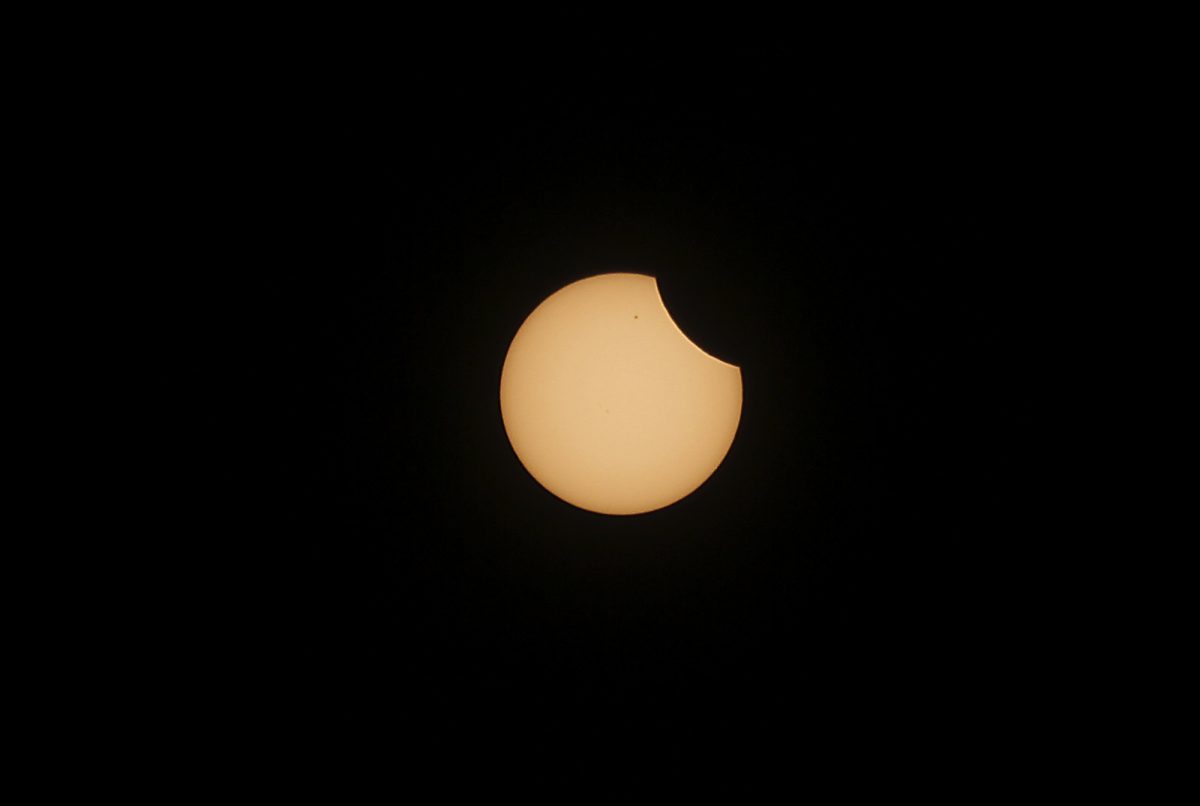With the country in great excitement over today’s eclipse, it’s a good time to look back at some of the most famous solar eclipses in the world’s history.
Videos by Rare
RELATED: Planning to watch the upcoming solar eclipse? Here’s how to keep your eyes safe
1. The sun feels shame
Mesopotamian historians in Ugarit, a port city in Northern Syria, recount that the sun was “put to shame” during a total eclipse on March 5, 1223 B.C.
The eclipse darkened the sky for two minutes and seven seconds. Scientists were able to calculate the time using a clay tablet from the era that was found in 1948.
The eclipse was originally thought to be in 1375 B.C., but a new analysis in 1989 changed the date.
2. Dating the death of Jesus
Mentions of an eclipse in passages of the Christian gospels that concern the death of Jesus have led to two possible dates of his crucifixion.
Astronomers believe that either a total eclipse in the year 29 or one in the year 33 is the one referenced. The first lasted 1 minute and 59 seconds, the second 4 minutes and 6 seconds.
3. Dating the birth of Mohammed and the death of his son
The Koran mentions an eclipse that preceded the birth of Mohammed, which has been tied to a total eclipse that lasted 3 minutes and 17 seconds in 569 C.E. The sun also disappeared for 1 minute and 40 seconds after the death of Mohammed’s son, Ibrahim, in January 632.
However, according to Islamic texts called the Hadiths, Mohammed proclaimed “the sun and the moon do not suffer eclipse for any one’s death or life.”
4. The death of an emperor…
Several deaths of famous people have occurred around eclipses, which over the centuries has led to superstitious fear of the celestial events.
For example, Charlemagne’s son, Emperor Louis the Pious, may have died in the aftermath of the terror he felt due to an eclipse on May 5, 840.
5. …and of a king
King Henry I died shortly after an eclipse that produced “hideous darkness” on Aug. 2, 1133, which fueled the superstition that eclipses were bad omens for rumors.
A historical passage describing this eclipse said:
“In this year King Henry went over sea at Lammas, and the second day as he lay and slept on the ship the day darkened over all lands; and the Sun became as it were a three-night-old Moon, and the stars about it at mid-day. Men were greatly wonder-stricken and were affrighted, and said that a great thing should come thereafter.”
6. The “devoured” sun ends a war
A war was raging in what is now eastern Turkey between the Lydians and the Medes in 585 B.C., when a total eclipse happened on May 28. Greek historian Herodotus reported the combatants were so disturbed by the sight of the sun being “devoured” that they stopped fighting and made peace.
7. It’s easier to see the one today
As astronomers became better educated and mass communication improved, people began to flock to eclipse locations as they are doing today.
Thousands of tourists traveled by train to Wyoming, Colorado and Texas to witness America’s first “Great Eclipse” of July 29, 1878. Braving treacherous storms, debilitating altitude sickness and the threat of Indian attacks, they enjoyed the spectacle.
8. Nat Turner’s rebellion
In February 1831, Nat Turner, a Virginia slave, witness a total solar eclipse. He interpreted as a sign to lead his fellow slaves into rebellion.
In August, he led the rebellion, and more than 60 men, women and children are said to have been killed over two days. He was captured and killed two months later.
9. Woe to the astronomers who failed to notify their rulers
More than 2,000 years before the birth of Christ, Chinese court astrologers in the court of Emperor Zhang Kang were beheaded for failing to predict a total eclipse. Xi and Ho, the court astrologers, were killed because the emperor was afraid he had failed to mitigate the anger of heaven.
10. Einstein’s theory
In 1915, physicist Albert Einstein proposed that gravity arises from a “warped” universe. The universe, he explained, is woven from an invisible space-time fabric that is elastic, like spandex. Any massive object sitting on it – say, Earth – creates a deep, circular depression, causing nearby objects to slide toward it. We interpret that movement as “gravitational attraction.”
Most scientists were skeptical, but a prominent British astronomer, Sir Frank Watson Dyson, said that if Einstein’s claim was true, rays of starlight passing close to the sun – which presumably produces a sizable space-time depression – would bend inward by a certain amount.
With a solar eclipse hitting South America and Africa in 1919, Dyson and a colleague saw that starlight grazing the eclipsed sun did indeed bend inward by precisely the amount predicted by Einstein.
Check out Rare’s eclipse playlist!
[protected-iframe id=”a00066cd5fdd2cc5358845807a2257e8-46934866-94750331″ info=”https://open.spotify.com/embed/user/wearerare/playlist/22AFZuacdclwsgAsh6Ya8F” width=”300″ height=”380″ frameborder=”0″]
[anvplayer video=”4156073″]



